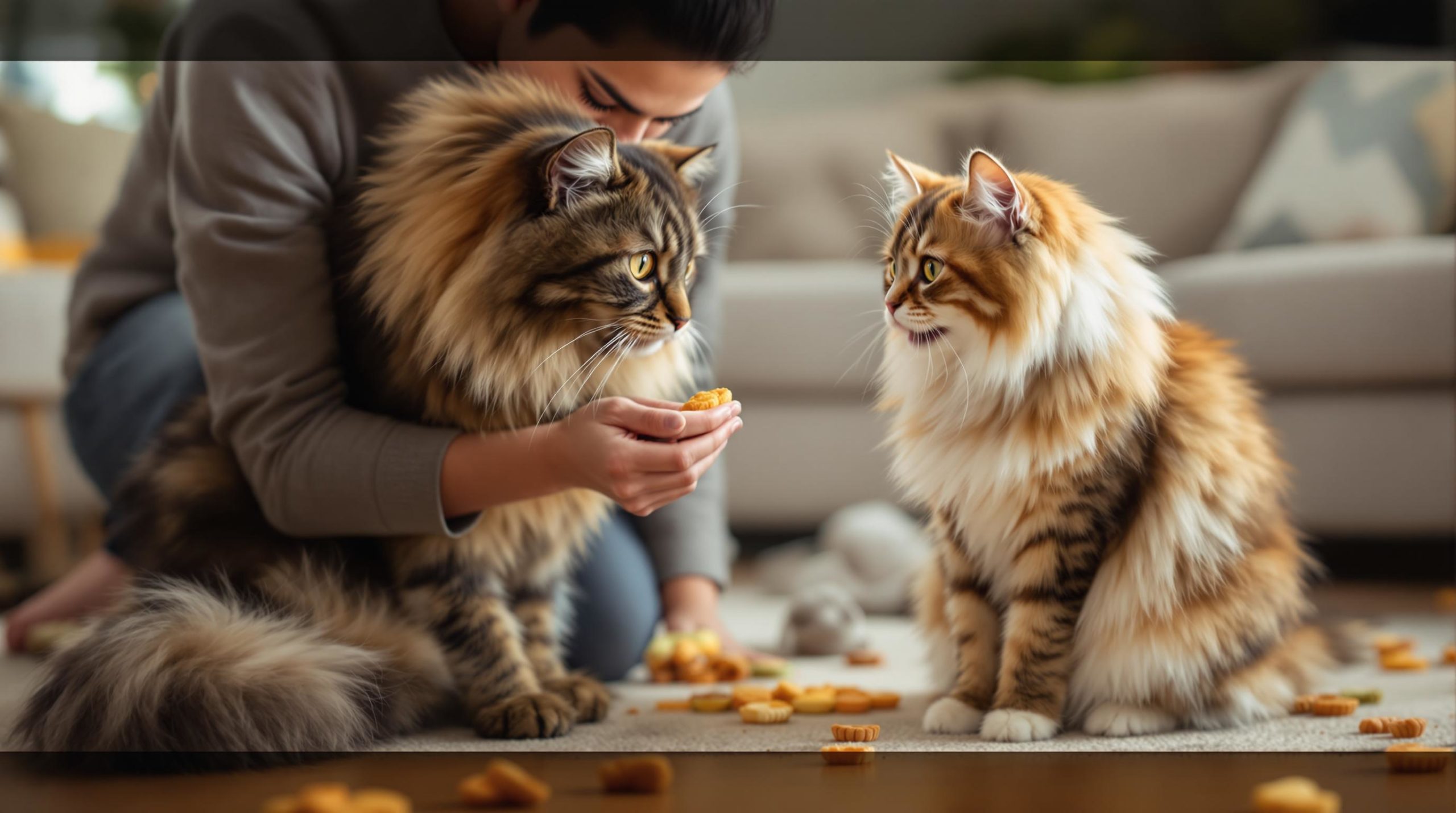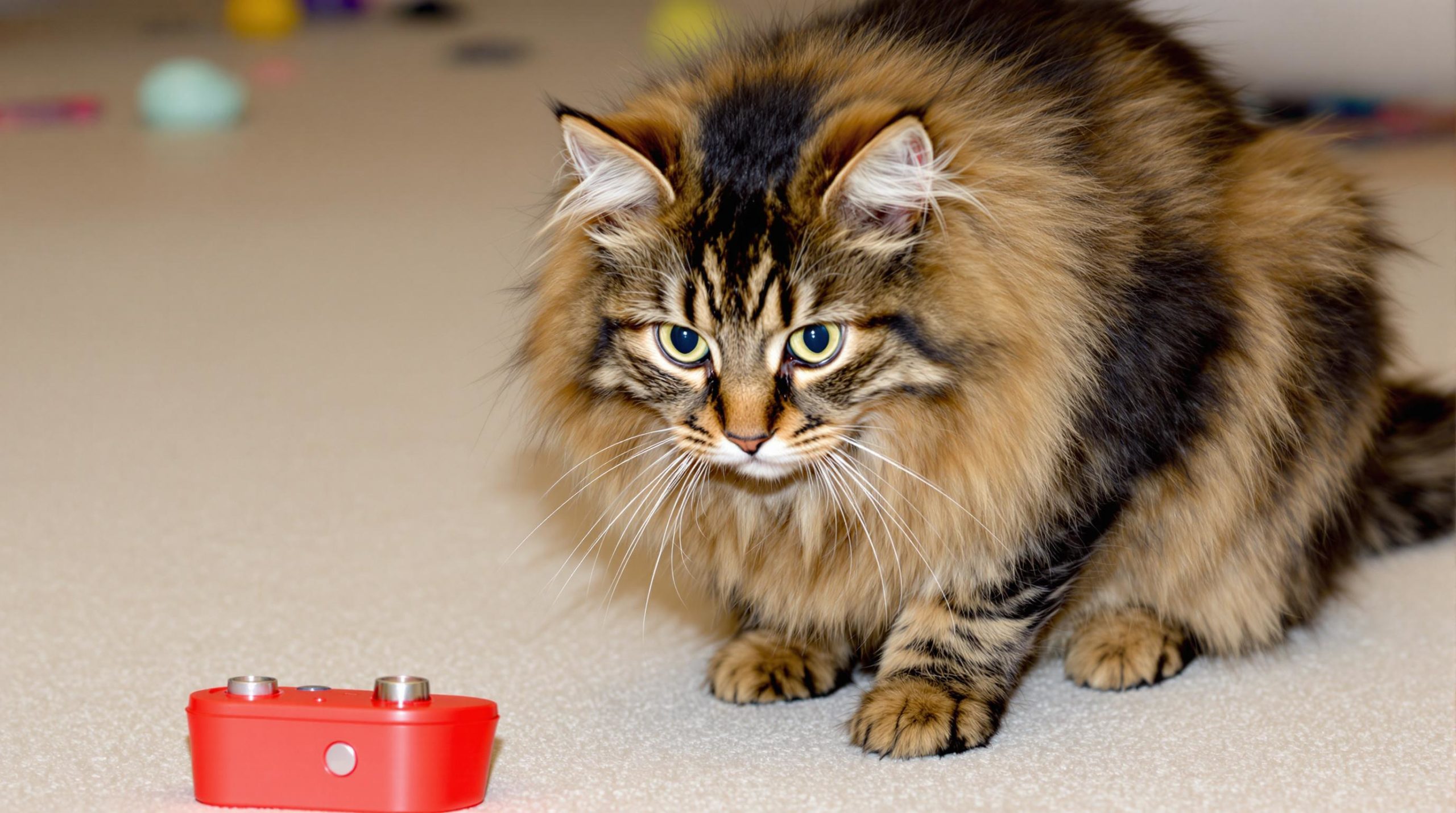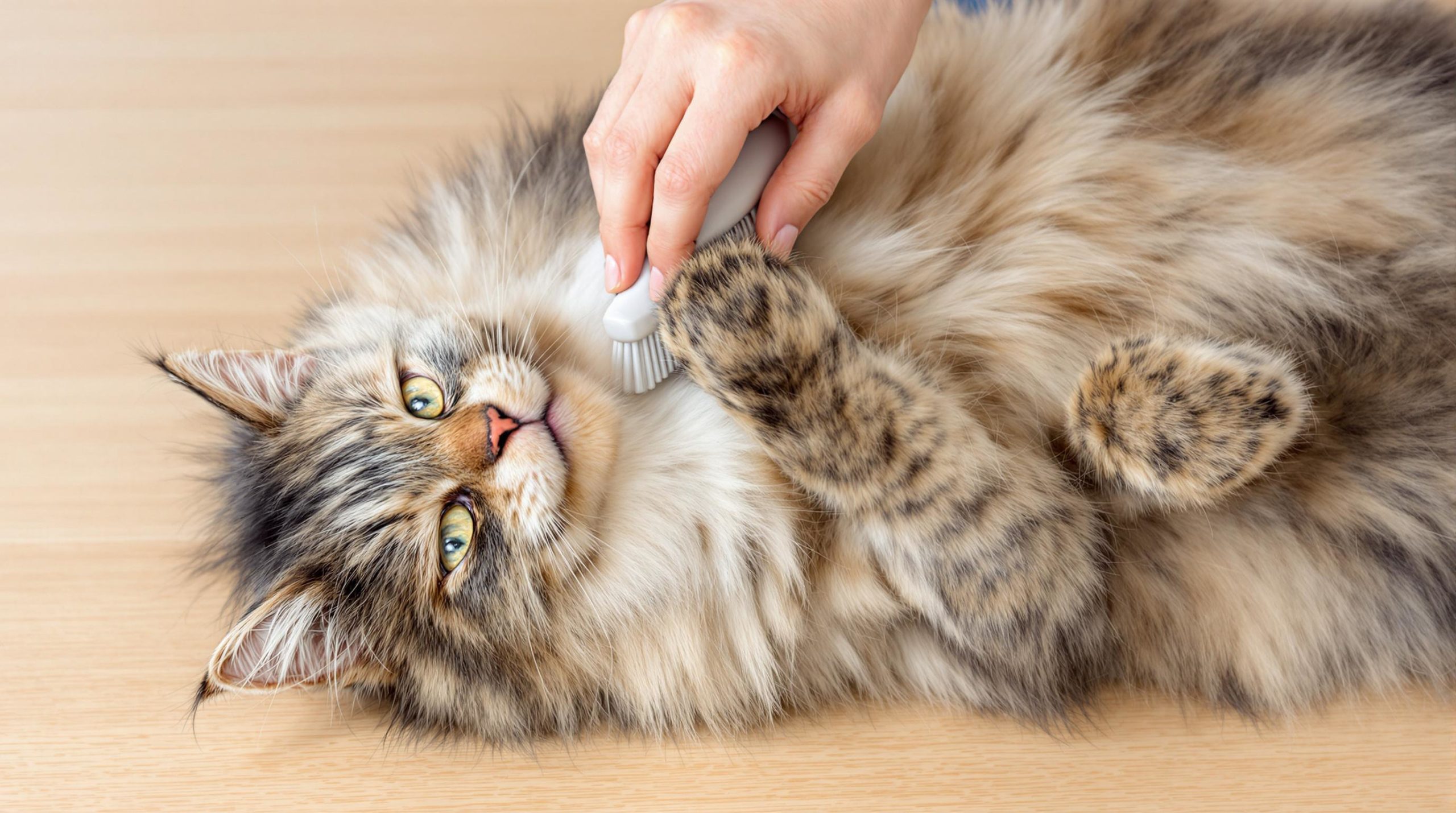Essential tips for training your Maine Coon effectively

Welcoming a Maine Coon cat into any home is like embracing a friendly, shaggy giant with a heart just as big. Renowned for their intelligence, gentle nature, and impressive size, Maine Coons quickly become treasured companions. Yet, understanding how to effectively train these majestic felines matters greatly for both their happiness and your shared harmony. From mastering basic commands to exploring advanced tricks or even leash training, knowing the right techniques and tools ensures a rewarding experience for cat and owner alike. This guide invites you to embark on a journey filled with patience, positive reinforcement, and fun-filled learning moments tailored specifically to the unique traits of the Maine Coon, one of the most affectionate and trainable breeds available today.
Understanding Maine Coon Personality Traits: The Foundation of Effective Training
Maine Coons captivate with more than just their impressive size or thick fur; their personality profoundly shapes training success. Famed for being notably friendly, sociable, and curious, these cats display an eagerness to engage with their human families unlike many other breeds. However, their gentle independence can be a double-edged sword during training sessions, requiring a careful balance between patience and consistent guidance.
Consider the typical Maine Coon nature when designing your approach:
- Intelligence: These cats are quick learners, but often prefer interactive challenges that stimulate their sharp minds over rote repetition.
- Affection Level: Strongly bonded to their owners, Maine Coons thrive when training becomes a form of social interaction and playtime.
- Curiosity: This trait can be harnessed but also calls for secure environments to prevent unwelcome adventures especially during outdoor introduction phases.
- Playfulness: They remain playful well into adulthood – an asset when using toys and games as motivators during sessions.
To better understand how their intelligence plays into training ability, explore insights from reliable sources such as Maine Coon Intelligence. Knowing these natural advantages and quirks smooths your path to establishing effective communication.
Another important aspect is to keep in mind the growth and developmental stages of Maine Coons. These giants mature slower than other cats, reaching full size around 3 to 5 years old. This extended period influences their capacity to learn and adapt. Check out the Maine Coon Growth Chart for a detailed timeline helping adjust training methods accordingly.
| Personality Trait | Training Implication | Recommended Approach |
|---|---|---|
| High intelligence and curiosity | Can learn complex commands but may get bored easily | Use puzzle toys, interactive play, and clicker training |
| Social and affectionate | Responds well to positive reinforcement and bonding during training | Incorporate play and treats consistently |
| Independent streak | May resist repetitive or forced training sessions | Keep sessions short, fun, and voluntary to encourage cooperation |
| Slow maturity rate | Training progress may fluctuate with age and development | Adjust expectations and training complexity as they grow |

Building a Positive and Trusting Training Environment for Your Maine Coon
Creating the right atmosphere is paramount when starting training with a Maine Coon. Unlike some pets who may respond to strict commands, these cats flourish in a setting where trust, consistency, and positive stimuli dominate. The training environment influences their motivation and willingness to engage, transform sessions from chores into bonding experiences.
Here are essential elements to curate an ideal training atmosphere:
- Establish Trust Early: Spend ample quality time playing and gently handling your Maine Coon before any official training begins. The stronger your bond, the smoother future lessons will be.
- Minimize distractions: Select quiet, comfortable spaces for training where your cat feels secure and is unlikely to be interrupted.
- Use Positive Reinforcement: Reward good behavior immediately with high-value treats from brands like Royal Canin, Purina, or Hill’s Science Diet to associate commands with pleasure.
- Incorporate Engaging Tools: Toys from PetFusion, treat dispensers by PetSafe, or challenging puzzles by Nina Ottosson stimulate mental exercise and encourage desirable habits.
- Maintain Consistency: Conduct multiple short sessions daily, maintaining the same commands, hand signals, and tone of voice to reinforce learning.
Investment in the right tools aids tremendously. For example, interactive toys from Chewy or durable scratching posts from Frisco provide avenues for both reward and natural behavior expression during training. Meanwhile, treat-dispensing puzzles encourage problem-solving, keeping Maine Coons mentally sharp.
| Training Environment Element | Description | Examples / Tools |
|---|---|---|
| Trust building | Quality time before training fosters cooperation | Gentle petting, play sessions, low-pressure interactions |
| Distraction control | Quiet, familiar spaces minimize lost focus | Closed room or enclosed area away from noise |
| Positive reinforcement | Reward desired actions immediately | Tasty treats (Hill’s Science Diet, Royal Canin), praise |
| Interactive training tools | Keeps sessions engaging and educational | Clickers, treat puzzles (Nina Ottosson), toys (PetFusion) |
| Consistent routine | Builds habit and reduces confusion | Daily schedule for sessions, same commands used |
To successfully accommodate grooming in your environment, Maine Coons require patience when introducing brushing through rewarding and quiet sessions. To maintain their majestic coat, exploring detailed grooming tips is helpful via resources like caring for your Maine Coon’s grooming needs.

Mastering Basic Commands and Socialization Techniques for Maine Coons
Training your Maine Coon to respond to foundational commands creates order and ease in daily life. Teaching simple commands such as “sit”, “stay”, and “come” not only demonstrates respect between you and your cat but also enhances safety and adaptability. Socialization is an equally crucial skill set, allowing your Maine Coon to thrive confidently around different environments and people.
Teaching Core Commands
The key to success lies in consistent, positive reinforcement. Start with “sit”: gently lure your Maine Coon into a seated position by raising a treat above their head and slightly backwards, prompting natural sitting behavior. Accompany the action with the verbal cue and immediately reward upon the correct posture.
Follow this with “stay,” using hand gestures like a raised palm to signal pause and backing away slowly while reinforcing the command verbally. Reward them for maintaining position and gradually increase the duration and distance.
Practice commands multiple times a day in frequent, short sessions to prevent fatigue or disinterest. Certain treats from trusted brands like KONG or Petmate can provide that extra motivation.
Socialization to New Experiences
Maine Coons are naturally curious and benefit tremendously from exposure to diversified environments. Gradual introduction to unfamiliar settings builds confidence and prevents fearfulness. Whether indoors or outdoors, helping your cat acclimate to various textures, sights, and sounds expands adaptability.
- Introduce new spaces slowly with supervision.
- Let the cat investigate at its own pace.
- Avoid overwhelming situations; comfort and reassurance are paramount.
When considering outdoor explorations, it’s vital to secure your Maine Coon’s environment since their inquisitiveness can lead to risky escapes. For insights on maintaining a healthy balance between indoor and outdoor time, refer to indoor vs outdoor Maine Coon considerations.
| Command | Training Technique | Benefits |
|---|---|---|
| “Sit” | Use treat lure and verbal cue to guide sitting | Establishes control, foundation for other commands |
| “Stay” | Hand signal with gradual distance and reward | Improves patience and obedience |
| “Come” | Call with praise and treats upon approach | Enhances safety and recall |
Advanced Techniques: Clicker Training, Leash Training, and Mental Stimulation for Maine Coons
Once your Maine Coon masters basic commands, introducing advanced techniques unlocks deeper mental engagement and physical activity. The breed’s intelligence and playful spirit thrive on these challenges, offering both a rewarding and fun bonding process for owner and feline alike.
Clicker Training for Precise Feedback
Using a clicker to mark exact moments of desired behavior helps Maine Coons quickly associate actions with rewards. Begin by associating the clicking sound with treats, ensuring your cat recognizes it as a positive signal.
Subsequently, integrate it into commands—click the instant the cat executes the behavior, then offer a reward. This method refines training precision and is excellent for teaching intricate tricks beyond sit or stay.
Leash Training for Safe Outdoor Adventures
Contrary to common belief, Maine Coons can be leash trained for supervised outdoor exploration. Select a well-fitted, comfortable harness that your cat can comfortably wear. Let your Maine Coon acclimate indoors before progressing outdoors gradually into quiet, calm areas with minimal distractions.
This approach satisfies their innate curiosity while ensuring safety and controlled freedom. Outdoor experiences enrich mental and physical wellbeing, echoing findings about their exercise requirements.
Mental Stimulation Through Puzzle Feeders and Interactive Toys
Mental engagement is as vital as physical exercise for such a clever breed. Puzzle feeders, especially those designed by brands like Nina Ottosson, challenge your Maine Coon to solve problems to earn their food, replicating hunting instincts in an indoor environment.
Interactive toys like feather wands, laser pointers, or motorized devices from PetSafe provide additional stimuli that refine reflexes and attention. Rotating toys prevents boredom and maintains interest over time.
| Advanced Technique | Description | Benefits and Tools |
|---|---|---|
| Clicker Training | Using a distinct “click” sound to mark good behavior | Improves precision and speeds learning; requires clicker and treats |
| Leash Training | Teaching safe exploration outside with harness and leash | Promotes exercise and curiosity safely; use harness from Petmate |
| Puzzle Feeders | Toys that make cats work for their food | Mental stimulation and boredom reduction; try Nina Ottosson toys |
| Interactive Toys | Engaging play with movement and surprise tactics | Encourages physical activity; great choices include PetFusion and PetSafe products |
Managing Common Challenges and Ensuring Long-Term Training Success
Even the most congenial Maine Coons may exhibit behaviors requiring patience and strategy during training. Understanding and addressing these hurdles can make the difference between frustration and fulfillment.
Handling Behavioral Challenges
Some common issues include scratching, vocalization, or avoidance. Redirecting unwanted scratching to legitimate posts, such as those from Frisco, protects home furnishings while satisfying natural instincts.
Excessive meowing may signal boredom or a need for attention and can often be mitigated through increased interactive playtime or puzzle toys that challenge their intelligence.
Coping with Anxiety and Environmental Changes
Maine Coons can be sensitive to modifications in their environment, such as relocation or new pets. Gradual exposure combined with familiar routines supports their emotional well-being. Simple steps like maintaining feeding schedules with trusted brands like Royal Canin or Hill’s Science Diet feed reduces stress during transitions.
Keeping Training Exciting for Continual Growth
Finally, celebrating small achievements and varying the training approach keeps enthusiasm stoked over time. Providing a mix of rewards, changing locations, or introducing new tricks combats boredom effectively.
| Challenge | Causes | Solution Strategies |
|---|---|---|
| Destructive Scratching | Boredom, natural instinct | Redirect to approved scratching posts (e.g., Frisco), provide interactive toys |
| Excessive Meowing | Attention-seeking, boredom | Increase playtime, reward quiet behavior, use puzzle feeders |
| Fear/Anxiety | Environmental changes, unknown stimuli | Gradual exposure, maintain routine, use calming feeding routines |
| Training Plateau | Loss of interest, too repetitive | Introduce variety, new tricks, and interactive games |
For detailed insights into Maine Coons’ playful nature and ways to channel their energy constructively, visit Maine Coons Play Behavior. Additionally, estimating costs associated with healthy and happy pets, including proper training tools and nutrition, can be found in Maine Coon Cost 2025.
FAQ About Training Your Maine Coon Effectively
- How long does it generally take to train a Maine Coon?
Training speed varies with each cat and the type of commands, but typically basic commands take a few weeks of consistent sessions. More advanced tricks require ongoing practice. - Can adult Maine Coons be trained successfully?
Absolutely. With positive reinforcement and patience, older cats learn new behaviors just as well, albeit sometimes requiring a little more time. - What should be avoided when training a Maine Coon?
Punishment or forcing your cat can backfire, causing fear or resistance. Keep training fun and voluntary, using rewards and praise instead. - Are professional trainers necessary?
While not mandatory, professional trainers can offer tailored guidance, especially if dealing with complex behaviors or performance tricks. - How to make training more enjoyable for both cat and owner?
Integrate interactive toys, keep sessions brief but frequent, and maintain a positive tone. Variety in rewards and environments also sustain interest.